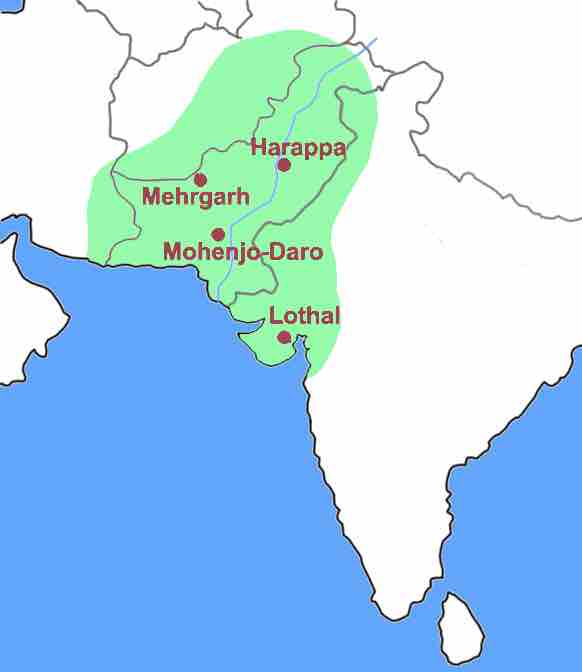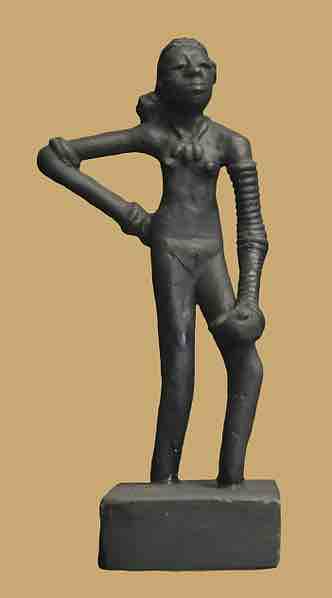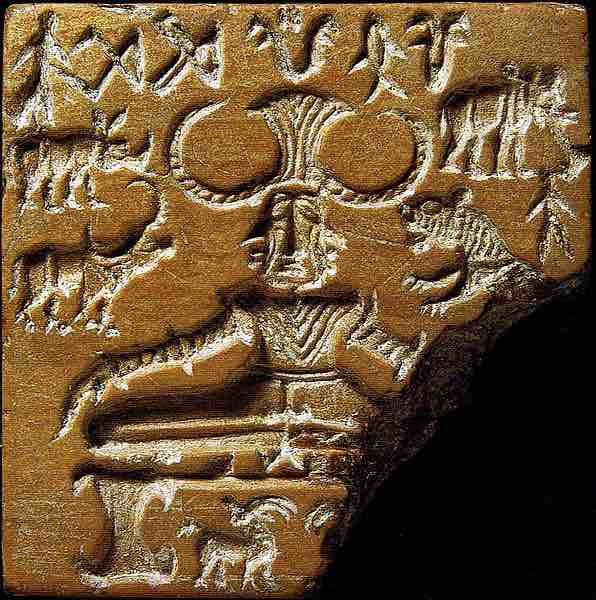Overview: The Indus Valley Civilization
The Indus Valley Civilization was a Bronze Age urban civilization that existed from 3300-1300 BCE and covered most of present-day Pakistan and northwest India. Situated around the Indus River and the Ghaggar-Hakra River, the Indus Valley civilization is also known as the Harappan civilization, named after Harappa, the first city to be excavated in the 1920s. Inhabitants of the ancient Indus Valley developed new and notable techniques in handicraft, metallurgy, trade and transportation, systems of measurement, and urban planning.

Indus Valley Civilization Map
This map illustrates the extent of the Indus Valley Civilization, imposed over modern borders of modern-day Pakistan and northwest India.
The civilization is often separated into three phases: the Early Harappan Phase (3300 BCE - 2600 BCE), Mature Harappan Phase (2600 BCE - 1900 BCE), and Late Harappan Phase (1900 BCE - 1300 BCE). The Mature Harappan phase was the cultural high point, a time by which communities had grown into well-functioning, enormous urban centers. Many artistic artifacts such as ceramics, sculptures, seals, and jewelry have been excavated from this time—more, in fact, than from some civilizations which began centuries after its decline. Numerous architectural remains have been found as well, including multi-story buildings, baths, and dockyards. To date, over 1,052 cities and settlements have been found in the general area of the rivers and their tributaries, with the major ones being Harappa, Mohenjo-Daro, Dholavira, Rupar, Lothal, and Kalibangan.
Indus Valley Cities
The cities of the ancient Indus Valley consisted of highly functional, multi-story buildings and structures constructed with uniform kiln-burnt bricks. There is evidence of urban planning due to the uniformity of size and style of the brickwork, as well as the organization of streets and neighborhoods into grid patterns, much like many current cities. The first-known sanitation system, whereby waste-water was directed into covered drains which lined major streets and where clean water was obtained from wells in a designated room in the home, was employed in the ancient Indus Valley. This system of sewage and drainage is quite remarkable and was more advanced than some seen even today.
The Indus Valley Civilization is also known for developing a unified system of weight and measurement, as well as a decimal system and the first known use of negative numbers. In 2001, it was discovered that people from the early Harappan period had knowledge of proto-dentistry with the excavation of the first evidence of drilled human teeth.
Art in the Indus Valley
The Indus Valley period is well documented through the wealth of artifacts which have been excavated from its magnificent cities. It is widely believed that most inhabitants of Indus Valley cities were tradespeople and artisans. Archaeologists have excavated sculptures, seals, pottery, gold jewelry, elaborate beadwork, and anatomically detailed figurines in terracotta, ceramic, bronze, lead, tin, and steatite from the ancient Indus Valley area. A number of bronze, gold, stone, and terracotta figures of girls in dance poses reveal the presence of some dance forms from the time, and a harp-like instrument depicted on a seal indicates the use of stringed musical instruments.
Similarities in the iconography and construction of excavated artifacts suggest the considerable mobility and trade networks of the Indus Valley inhabitants. Raw materials found only in distant regions, such as lapis lazuli and steatite, were imported for artistic use. It is believed that the trade networks of the Indus Valley reached as far as Afghanistan, coastal Persia, northern and western India, Mesopotamia, and Egypt.

Dancing Girl of Mohenjo-daro
A small 4500-year-old bronze statuette of a dancing girl was excavated in Mohenjo-daro in 1926.
The iconography of the artifacts from the Indus Valley region often depict quite anatomically correct animals and human figures. Similar to other civilizations of the same time period, such as Ancient Egypt and Mesopotamia, there are many depictions of female figures, or possibly fertility goddesses. One motif shows a horned figure seated in a posture reminiscent of the lotus position and surrounded by animals; this was named Pashaputi (lord of cattle) by excavators. Between 400 and 600 distinct Indus symbols indicating a language have been found on ceramics, seals, and tablets, though the language remains entirely unknown to this day.

Pashupati
Discovered at Mohenjo-daro, this seal depicts a seated, horned figure surrounded by animals, who is commonly interpreted to be Pashupati, the "Lord of Cattle."
Indus Valley Society
Socially, the Indus Civilization appears to have been relatively egalitarian in nature. All homes within the various cities had access to water and drainage facilities and were generally equal in size. The evidence for planned settlements and the uniformity of Harappan artifacts suggests a strong organizational or governing force in the Indus Valley Civilization, though archaeological records provide no immediate answers.
Around 1800 BCE, signs of decline began to emerge in the Indus River Valley. By 1700 BCE, many of the cities had been abandoned. The reason for the decline of the civilization is unknown, but it is theorized to be due to enemy invasion throughout the area, a change in climate to significantly cooler and drier conditions, or the disappearance of the Ghaggar-Hakra River. After the collapse, regional cultures emerged showing influence of the Indus Valley Civilization to varying degrees.